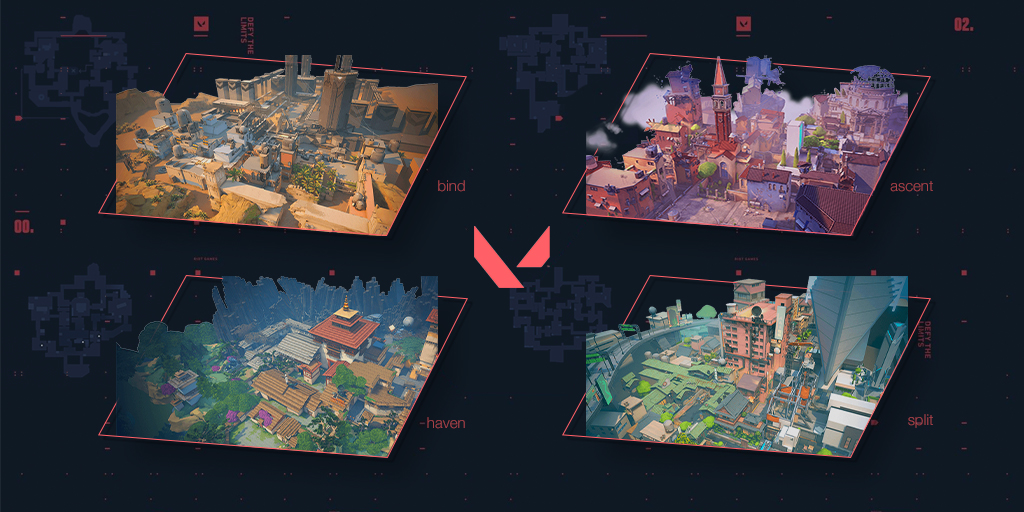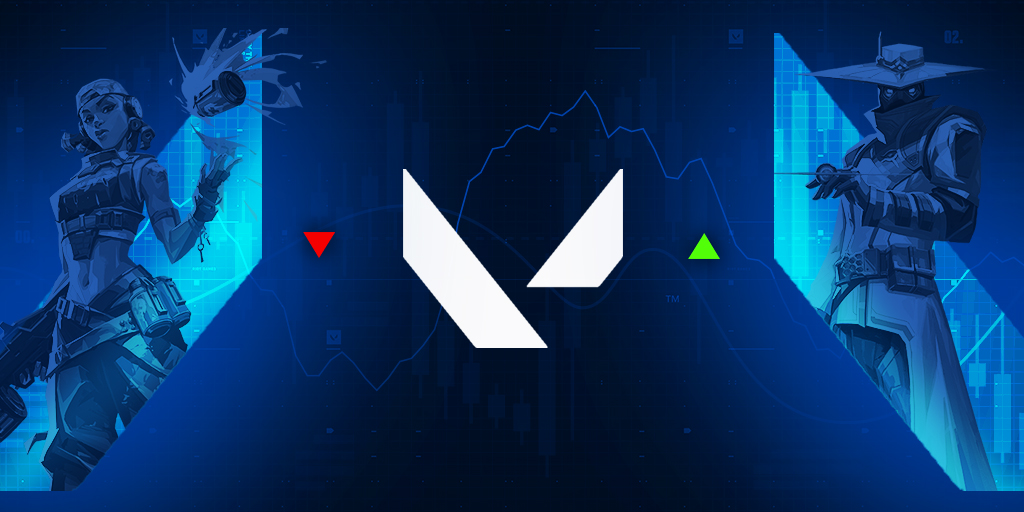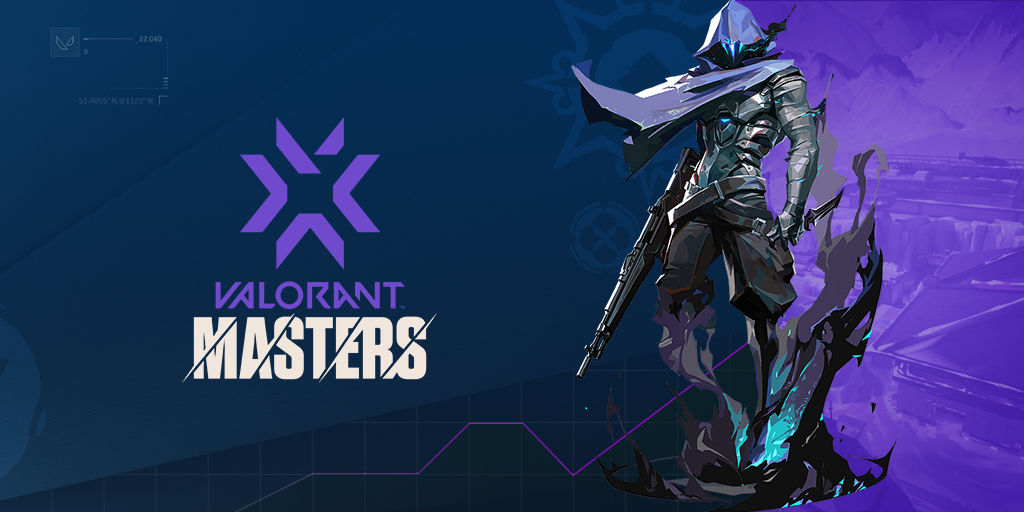As a new tactical first-person shooter game with an emphasis on abilities, VALORANT players use a unique mix of terminology to match the roles found within the game. In this guide we go over those roles and how they function within the game.
VALORANT shares a number of similarities to the widely popular Counter-Strike: Global Offensive (CS:GO) in terms of the roles played in the game. While VALORANT doesn’t have an extensive competitive history to define the roles within it, many have applied the roles found in CS:GO to help create clarity surrounding the topic.
As with all esports titles, being able to communicate effectively and at a high level is crucial for competition and ranked play. Having known roles within a match enables players to identify how they, or a teammate, should play as a game unfolds and what information needs to be conveyed to ensure the team wins. Having a a working knowledge of how these roles work can also enhance your VALORANT betting knowledge.
What are the different roles in VALORANT?
Within the game, agents are broken down into four general roles: Sentinels; Controllers; Initiators; and Duelists. These roles are then broken down into more specialised positions such as Support, In-game Leader, Entry Fragger, Lurker, Recon, and Crowd Control. Each role is defined by the abilities the agent brings to the match.
Sentinels - Support and In-Game Leader
Sentinels are defensive experts that have abilities that manipulate the battlefield, lock-down areas of contention and provide utility such as healing. There are currently four Sentinels in VALORANT: Cypher; Killjoy; Chamber; and Sage.
A Sentinel is typically responsible for providing support to a teammate much like the Support role in CS:GO functions.
Sentinels will either move around the map to gather more information or when defending, will be an anchor on a bombsite with the goal of slowing down opponents so that teammates have enough time to provide assistance.
Due to the passive nature of their abilities, players that use Sentinel agents are typically responsible for being the In-game Leader (IGL). The IGL is responsible for outlining the overall team strategy, coordinating team movements around the map, and ensuring teammates communicate enemy locations effectively.
Sentinels aren’t expected to perform as well on the scoreboard when compared with their Controller and Duelist counter-parts; instead, their primary purpose is to enable their teammates to shine while they work quietly in the background.
Controllers - Secondary Entry Fragger and Lurker
Controllers are experts at controlling the battlefield by the use of smoke screens. Their abilities disrupt their opponents’ sightlines whilst providing cover for teammates as they take control of an area. There are currently five controllers in VALORANT: Astra; Brimstone; Omen; Harbor, and Viper.
As mentioned previously, the primary responsibility for Controllers is the ability to control sightlines on a map, this is important in VALORANT because it narrows down the opportunities an enemy has to engage a teammate from a favourable position.
Controllers such as Viper, Brimstone and Harbor will typically use their abilities prior to a team executing a strategy on a bombsite, following the Duelists on their team as a Secondary Entry Fragger once they’ve used their smoke screens.
Alternatively, Controllers can act as Lurkers, who are responsible for guarding against enemy flanks or performing a flank of their own. The agent known as ‘Omen’ is a proficient Lurker with an ultimate ability that allows him to teleport to any location on the map, making him particularly deadly when infiltrating the backlines of the enemy.
Duelist - Entry Fragger
Duelists are the offensive experts in VALORANT with abilities that allow them to be aggressive and self-sufficient when creating opportunities to engage with opponents. There are currently six Duelists in the game: Jett; Phoenix; Raze; Reyna; Yoru and Neon.
By role type, Duelists like Raze should be dealing the most damage to opponents based on how their abilities are constructed.
Duelists are expected by their teammates to be proactive and are the stars within the team that garner the most amount of kills. They will typically fulfil the role of Entry Fragger, being the first person to enter an area of the map in contention and perform high-risk, high-reward actions to gain an advantage. The Duelist role is particularly volatile and leads to players experiencing a feast-or-famine scenario in performance, thus teams should give these roles to teammates with excellent aim.
With more team-focused gameplay when compared to CS:GO, Duelists in VALORANT should leverage the supporting abilities from Sentinels, Controllers, and Initiators to maximise their own potential to dominate opponents.
Initiators - Recon and Crowd Control
Initiators excel at gathering information and controlling the movements of opponents through the use of their abilities.
There are six Initiators in VALORANT: Sova; Skye; Breach; KAY/O; Fade, and Gekko. Sova, Skye, Fade and Gekko rely on their abilities to perform reconnaissance in an area while Breach and KAY/O specialise in disrupting enemies in their path through the use of their crowd control abilities.
Sova, Skye’s, Fade, and Gekko's abilities allow for them to recon areas of the map where the opponents may be contesting and convey this information to their team. Breach and KAY/O on the other hand use their abilities to flush out and disrupt opponents in hard-to-reach locations from relative safety.
While Initiators are in a category of their own, they could easily perform the defensive role of a Sentinel or Controller, or take a more proactive role like a Duelist.
The importance of agent select
Before a match starts, players will have an opportunity to select the agent they wish to play, referred to in-game as agent select. Assembling a well-balanced line-up of agents can go a long way to improving the chances of winning a match.
Sage was the most picked agent in the VALORANT closed beta with the agent likely to be an essential pick in competition.
In the current meta of VALORANT, having two Sentinels, Sage, and Cypher, is considered essential for a team. Sage is particularly important due to her ultimate ability which allows the resurrection of teammates that have been killed, in addition to the ability to heal, while Cypher’s tripwires and spy camera can provide valuable insight into an opponent's movements, essentially creating areas of control at low risk.
A balanced team will typically feature two Sentinels, one Controller, one Initiator, and one Duelist. Whilst it may seem counterproductive that a balanced team only features one Duelist, the diverse set of abilities that feature in the other roles outweighs the advantage an additional Duelist may add to a team’s overall potential.







